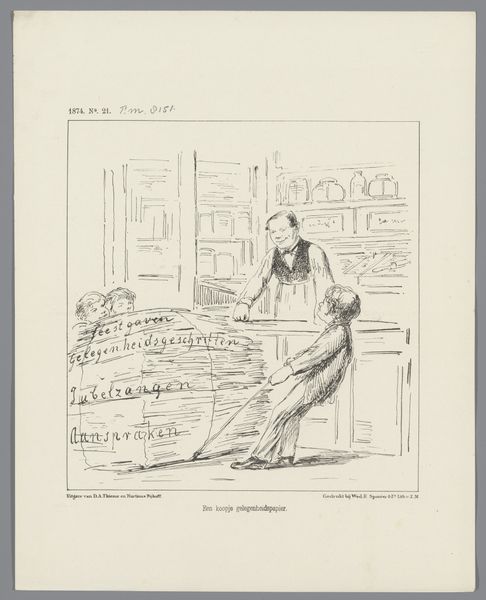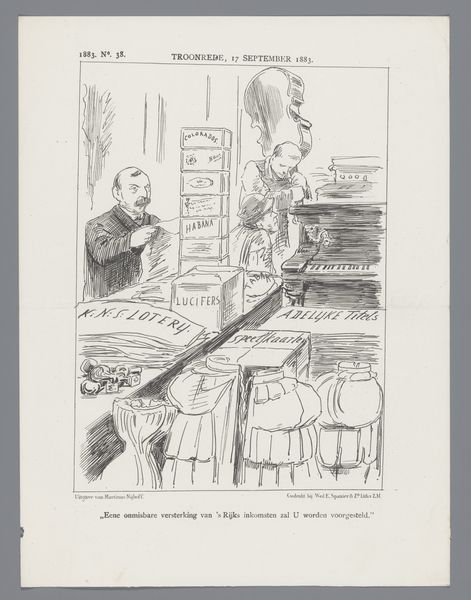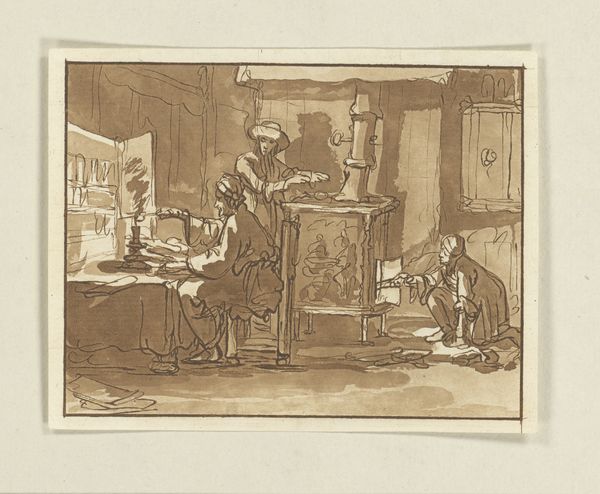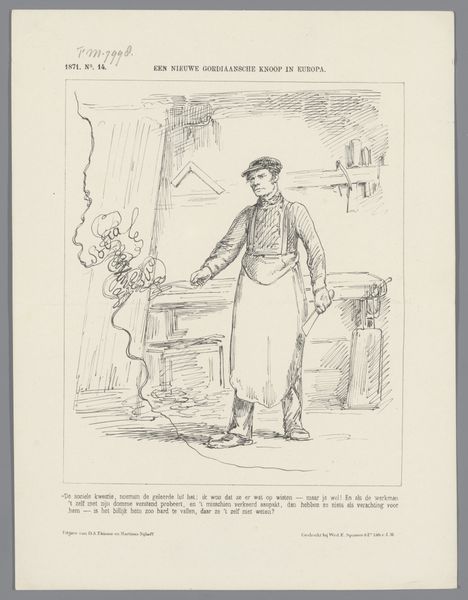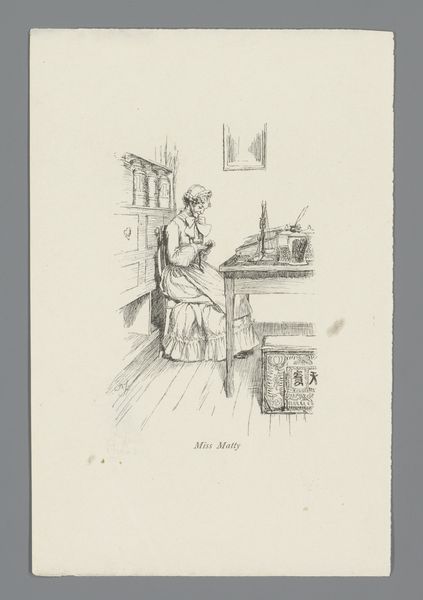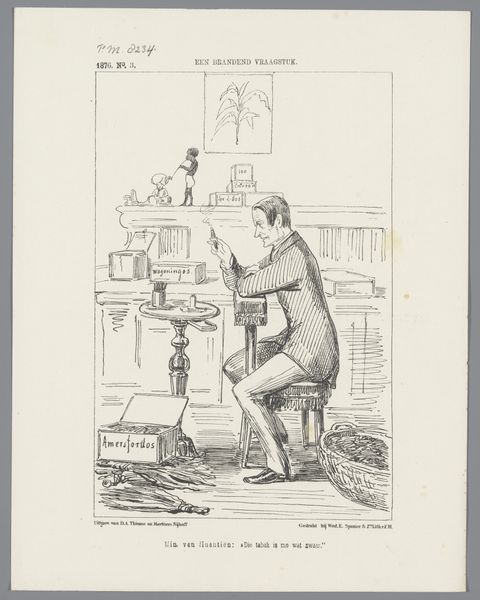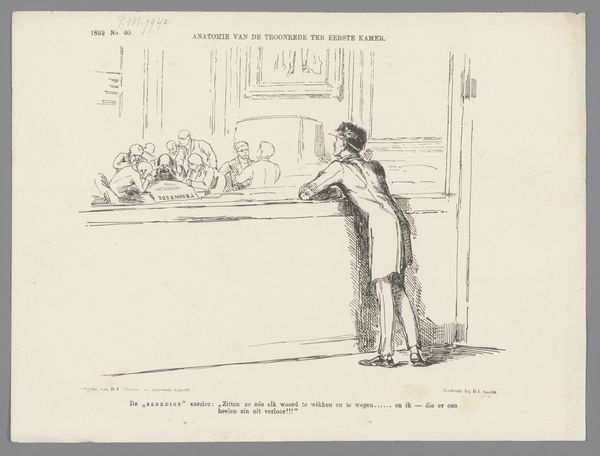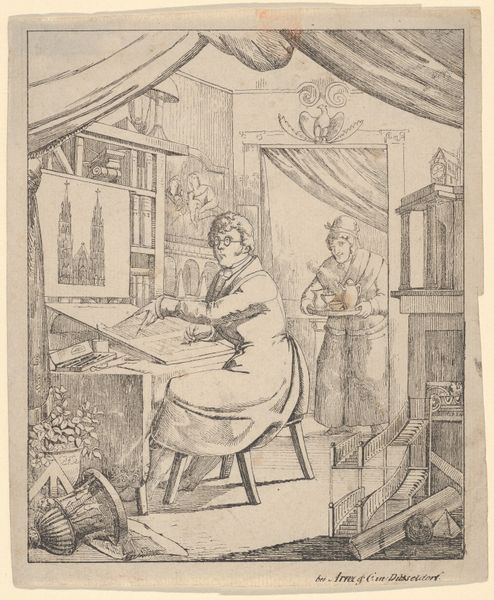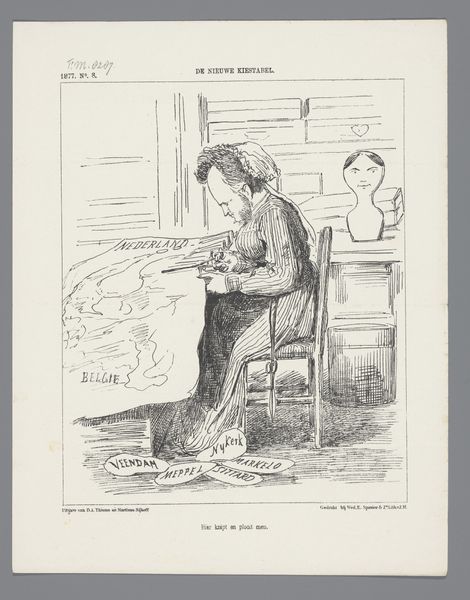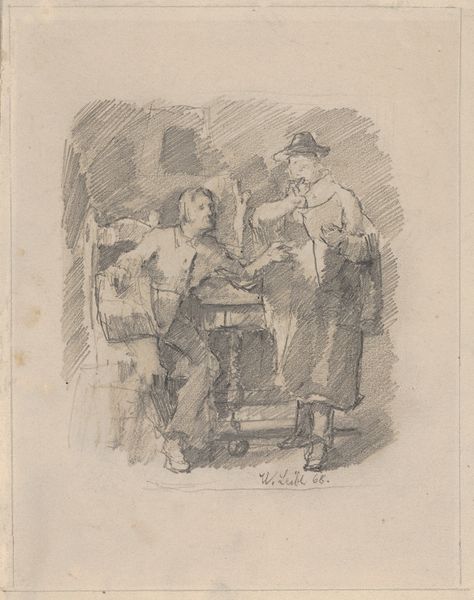
drawing, print, paper, ink
#
portrait
#
drawing
#
aged paper
#
paper non-digital material
#
quirky sketch
# print
#
caricature
#
sketch book
#
personal journal design
#
paper
#
personal sketchbook
#
ink
#
sketchwork
#
line
#
sketchbook drawing
#
genre-painting
#
storyboard and sketchbook work
#
sketchbook art
Dimensions: height 275 mm, width 215 mm
Copyright: Rijks Museum: Open Domain
Curator: Welcome. Today we're looking at a print from 1867 by Johan Michaël Schmidt Crans titled "Spotprent op minister Van Zuylen als apotheker, 1868," or "Caricature of Minister Van Zuylen as a Pharmacist, 1868". It's rendered in ink on paper, a caricature that’s both precise and pointed. Editor: Pointed indeed! My first impression is one of wry amusement. There's a playful darkness here. The sketchiness, the spindly lines—it feels like peering into a political joke book of the era. Look at him, sleeves rolled up, diligently crafting...something? Curator: Indeed. This caricature presents the Minister of Internal Affairs, Van Zuylen van Nijevelt, as an apothecary mixing ingredients in "the national pharmacy," likely referencing controversial policies or political schemes of the time. Editor: So, a critique masked as a visual pun? I love it. Those oversized medicine bottles he's pouring from, labeled with barely legible Dutch, feel like they're brimming with irony and a dash of insider baseball for contemporary viewers. You almost feel sorry for him… almost. Curator: Political cartoons of this period often used symbolism to express criticism indirectly, navigating censorship and public sentiment. The tools of the apothecary become symbols of Van Zuylen’s policies, implying that he is concocting something potentially harmful or ineffective. The humor makes the critique more accessible. Editor: Absolutely. There's an immediacy to the drawing style, as if Crans dashed this off in a fit of inspired frustration. The perspective's skewed, the details are exaggerated – yet, the message is crystal clear. Political art at its most biting, yet…somehow elegant? Even the aged paper adds a layer of time, like we’re in on the joke after all these years. Curator: Exactly. Consider the "Beste Kleef Pleister" or Best Adhesive Plaster signage in the background - a dig perhaps at policies intended to fix, but instead only temporarily 'patch' up underlying problems within the country. Editor: It all adds up to this rather wonderful, almost farcical, vision. Political critique with the lightness of touch you rarely see these days. This sketch shows you how potent humor is; a shared laugh that cuts right through the...ahem, concoction. Curator: Indeed. This artwork is a fine example of how artists contribute to the political discourse, not just recording events but shaping public perception with wit and creativity. Editor: And offering us a good chuckle down the line, I might add. A dose of delightful poison well-mixed by Master Crans.
Comments
No comments
Be the first to comment and join the conversation on the ultimate creative platform.
